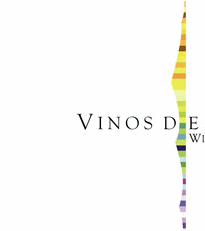Canada: Canada People Profile 2012
2012/02/28
Canada People Profile 2012
Canada’s population will be growing at a decelerating pace in 2010-2030. Meanwhile, an ageing process is underway. The number of those aged 65+ will shoot up by 82% in 2010-2030. Immigration already accounts for more than 50% of population gains and will be responsible for virtually all growth in the labour force in the future. Roughly two-thirds of the foreign-born population live in Canada’s three largest metropolitan areas – Toronto, Montreal and Vancouver.
Population
In 2001 the population of Canada was 30,007,094—an increase of 1,160,333 over the 1996 total. The rate of increase was 4 per cent, or an average of about 0.8 per cent a year.
Roughly three-fourths of the people live in urban areas, nearly all of them near the southern border. The most heavily populated region extends along the north shores of Lakes Erie and Ontario into the St. Lawrence valley. Here, too, are the two dominant cities of Canada, Montreal and Toronto. Most of central and northern Canada is virtually unihabited. The overall population density is only 8.58 persons per square mile (3.3 per km2) of land, one of the lowest for any nation.
Language
Both English and French are recognized as official and equal languages by the federal government. English is the native language of about 60 per cent of the population; French, of about 25 per cent. Among the remainder of the population, a majority are people for whom Chinese is a native language. About 13 per cent of the population speak both English and French; fewer than 2 per cent speak neither.
Bilingualism has long been a sensitive political issue, with French Canadians feeling that Canada has been dominated by the English-speaking. The federal government sought to improve the situation by promoting bilingualism in all the provinces. In 1974, however, the Quebec government made French the sole official language in that province. Inuktitut is the working language of Nunavut, but English and French are also used.
Religion
About 45% of the people are Roman Catholics and 36 per cent Protestants. The largest Protestant denominations are the United Church of Canada (a union of Methodists, Congregationalists, and some Presbyterians), to which more than 10 per cent of the people belong, and the Anglican Church of Canada, with about 8 per cent of the population. There are also relatively large numbers of Presbyterians, Lutherans, Baptists, Greek Orthodox, and Jews. Two provinces—Quebec and New Brunswick— are predominantly Catholic; the remainder have Protestant majorities.
- Canada News
-
- AFGHANISTAN: UNWTO: International tourism – strongest half-year results since 2010
- CANADA: Equifax says hack potentially exposed details of 143 million consumers
- CANADA: U.S. trade rep says in NAFTA talks he keeps Trump's views in mind
- CANADA: Why Mexico, Canada can discount Trump’s remarks on NAFTA?
- BRAZIL: Brazil' Gov't Calls For WTO Panel Against Canadian Subsidies To Bombardier
- CANADA: Canadian subsidiary of French defence giant gets $5.2 billion contract
- Trending Articles
-
- BOTSWANA: Africa: U.S. State Department To Get Experienced Diplomat in Key Africa Post
- BURUNDI: Burundi: Govt Rejects UN Accusations of Crimes Against Humanity
- CHINA: China Invites 5 Countries As Guests For BRICS Summit
- ARUBA: Director of Tourism Turks and Caicos after Irma: Tourism, visitors, hotels current status
- IRAN: Saudi Arabia denies warming relations with Iran
- ISRAEL: Finance Ministry: Housing market slower in July









